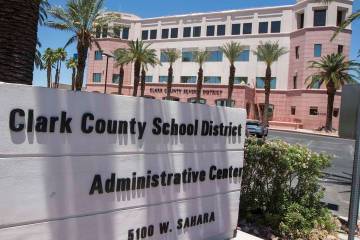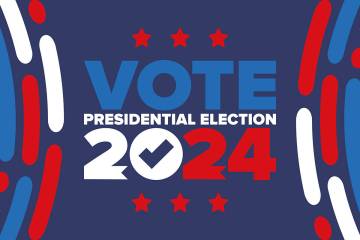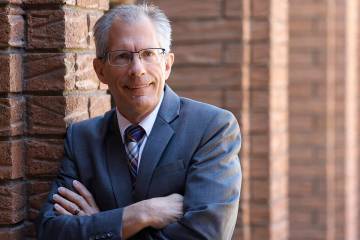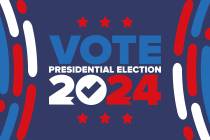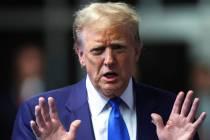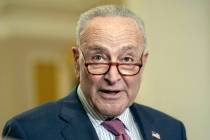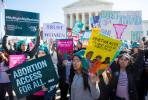Sandoval will leave successor tighter control of executive power
CARSON CITY — Brian Sandoval has taken tighter control of executive power during his tenure as Nevada’s governor, carving out a role that will be inherited by the state’s next commander in chief when voters elect his successor in late 2018.
Over the last four legislative sessions, the governor expanded his office’s influence in shaping many aspects of state government — from economic development and K-12 oversight to influence at the Department of Wildlife and obscure bodies such as the College Savings Plan Board.
Some of the changes were bold initiatives pushed by Sandoval, while others were subtle tweaks. In the aggregate, they add up to a bigger sphere of control within the governor’s office carried out through the power of appointment.
The bold
Economic development and education were top priorities for the newly elected governor when he took office in 2011 as Nevada suffered debilitating seizures of the Great Recession — record unemployment, a housing meltdown and foreclosure epidemic. State and local government coffers were beyond the brink as revenues dried up and the demand for social services spiked.
That year, Sandoval, with legislative leaders’ backing, launched a sweeping overhaul of the state’s economic development efforts, taking a disjointed system and wrapping it in a cohesive plan focused not just on creating jobs but attracting jobs and industries that would redefine the economy and cushion it from wild swings experienced by construction and hospitality sectors.
“We were the only state in the country at the time that economic development didn’t answer to the governor,” said Steve Hill, who advised Sandoval before he took office and was then appointed as executive director of the Governor’s Office of Economic Development.
Hill was integral in negotiations to lure Apply, Tesla and Faraday Future, among others, to Nevada, moves that generated interest in the Silver State from high-tech and manufacturing companies around the globe.
“Part of the reason it made such a difference is because of who our governor is. That matters,” Hill said. “It’s not just a structural thing.”
Also in 2011, legislators revamped the state Board of Education, scrapping the 10-member, wholly elected board with a hybrid body consisting of four elected members and three gubernatorial appointees, two of whom are nominated by the Senate majority leader and Assembly speaker. The governor also appoints four nonvoting members nominated by other educational groups or institutions.
That law also made the superintendent of public instruction an appointee of the governor, chosen from three candidates submitted by the board. Once upon a time, the superintendent was elected, and until the latest change, it was an appointed position filled by the state board.
The goal was to align Nevada’s floundering education system with workforce development needs of a 21st-century economy.
The subtle
Lawmakers also gave the governor power to appoint the director of the Department of Wildlife regardless of whether the choice was among those recommended by the state Wildlife Commission.
And in 2015, the Legislature bifurcated budget duties from the Department of Administration, setting up a new Office of Finance within the governor’s office and authorizing a new budget director. Previously, the director of the Department of Administration also served as the budget director.
“It might not seem like a lot, but they were in separate agencies,” said Eric Herzik, chair of political science at the University of Nevada, Reno. “Where now, it’s in the governor’s office.”
“I would say in my own opinion, it was probably a good thing to do,” he added. “But it does enhance the governor’s power.”
Changes not unusual
Such changes during an administration are not unusual, as each governor, regardless of political party, plots a course to achieve priorities. And the power bestowed upon Nevada’s governor today was not imaginable more than 150 years ago when the state Constitution was written, said Michael Green, associate history professor at UNLV.
“The governor wasn’t expected to have the power he does now,” Green said. “The idea of the governor having power was alien to them, or at least the kind of power the governor now has.”
Green noted that Sandoval, a popular, two-term governor, succeeded fellow Republican Jim Gibbons, “who had become very unpopular and antagonized a lot of people on both sides of the aisle.”
Sandoval, in comparison with his predecessor, was viewed as someone “less likely to abuse that power,” Green said.
Green believes one reason the governor’s powers have grown over the years is because the Legislature’s authority has remained stagnant. It does not have confirmation oversight of key government appointees and meets only every other year in regular session.
“One of the reasons I think the governor’s power has expanded is that Nevadans have refused to go to annual legislative sessions or have sessions that meet more frequently to deal with immediate problems,” he said.
Going forward
“The new governor is going to inherit that framework: enhanced budget powers, enhanced economic development powers, enhanced education powers,” Herzik said. “Any new governor will have some different policy or interests than Sandoval had. That’s a given.”
Appointments made by governors have always mattered.
“But as the governor’s power has grown, it does make the issue even more important,” as voters consider the next occupant of the Governor’s Mansion, Green said.
“The governor has more power to appoint people who can either make it work or gum up the works,” Green said. “If the governor can just choose members of boards and it isn’t a governor who makes good judgments, then we could have a problem.”
Follow @SandraChereb on Twitter.





